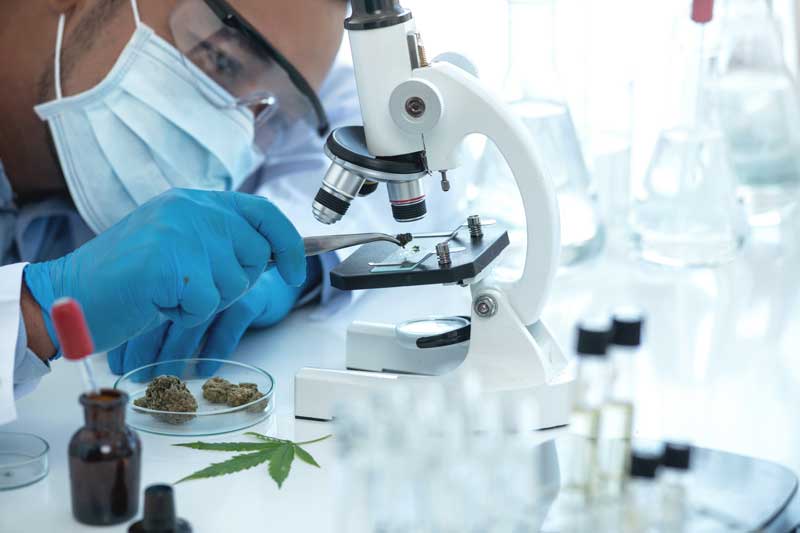Cannabis organizations can use data to improve their operations in any number of ways. Used correctly, data and analytics can mean the difference between business success or a company struggling to stay afloat. It can help an organization understand its customers’ preferences, or what market trends are indicating.
And then there is the data surrounding the creation of the product itself. Growers have to make sure the plant they are cultivating meets certain specifications, and there are testing analytics labs to help them make sure they are doing so. Here is what those labs look at and why they are important.
What’s worth collecting
First things first – for cannabis producers, there is certain data that can help make sure the conditions are producing optimal growth. Some of it is easy to track, such as temperature, or amount of water and light that the plants are exposed to. But there are other metrics such as carbon dioxide (CO2) concentration or vapor pressure deficit (VPD), which can further help the plants but might require a more intensive tracking system.
Many cultivation facilities already gather some of this information in some form, sometimes simply by writing down the temperatures in the facility. There is technology that can help automate the processes, allowing companies to produce the ideal settings for the plants. Some of the equipment can alert users to aspects like the most efficient usage of light bulbs, or when an air conditioner is not blowing at the temperature it should be.
Importance of testing analytics
Just because the product is grown to meet a company’s desired result doesn’t mean it is ready to sell. That’s where labs come in, and even more data is involved. There are different levels of lab testing analytics, but the most important is the most basic: the fact that the testing is done to make sure the product is safe to consume, and that everything is labeled accurately.
One of the biggest pushes for federal regulation in the United States is for consistent regulation from state to state. As it stands, states test for different data points, sometimes drastically so. Cannabis users who have done their research can identify exactly which strains produce their desired results, and testing analytics allows for more consistency along those lines. A consumer should have an idea that a vendor in a state where cannabis is legal is selling them a correctly labeled strain, as opposed to the illegal market, where the product is not meeting the same regulatory standards.
What does a testing lab do?
All states where cannabis is legal require lab testing, but the standards vary. Some can have fewer than 20 points they test, while others could test for more than 60. The simplest testing looks for aspects such as pesticides, heavy metals, moisture activity, and potency levels, while the larger ones get into a deeper analysis of data including terpenes, mycotoxins, and residual solvents.
Once state regulations are met, the testing can help an organization customize their product. The potency of the cannabis can determine the price, and the overall profile can influence how the company markets what it is selling. Breaking down the product to get an understanding of its components can help with innovation – a company can use the information to determine what makes them unique, or to identify elements that can help set them apart from others in the industry.

The different groups involved in the cannabis pipeline all rely on the testing results for different reasons. For the consumer, it’s making sure the product meets the description it is labeled as. For labs, it’s making sure the product is safe. As previously mentioned, companies can use the information in a variety of ways, including innovation. Companies need to find the right lab for them, one that they can trust to deliver accurate results while understanding why it might want other information about the plant.
Whether it is self-monitoring technology to gather data on the growing process or machinery that tests every aspect of a plant in the lab, there are large expenses associated with the process of gathering data in the cannabis industry. The right analytics solution can make the expense worth it. Some software even offers data visualization that allows for a better understanding of the information that is gathered.
Organizations need to figure out what works best for them in terms of cost efficiency. With the amount of time it can take to grow the product and get it tested, though, any solution that can help make sure the product is grown right the first time and make sure that process is done efficiently could start paying for itself immediately.
- What Data Can Bring to California’s Investment in its Ports - July 25, 2024
- Unlocking the Power of Data in the Utilities Industry - July 18, 2024
- How Analytics Can Help Your Wholesale Nursery Grow - July 17, 2024



